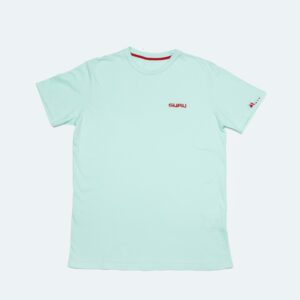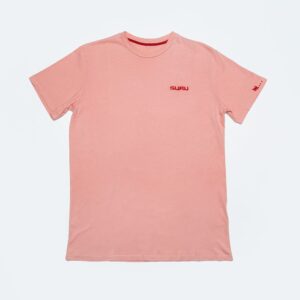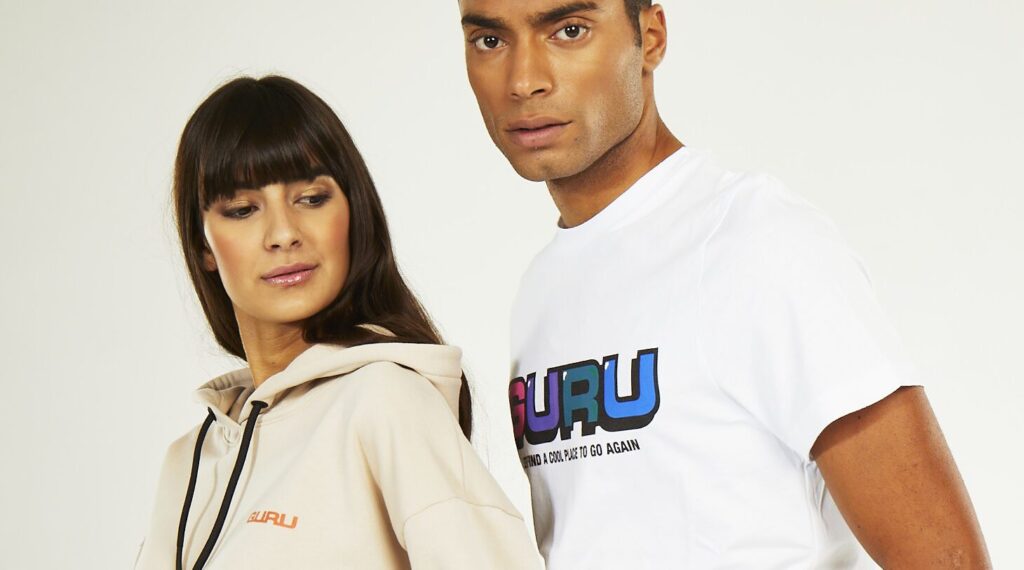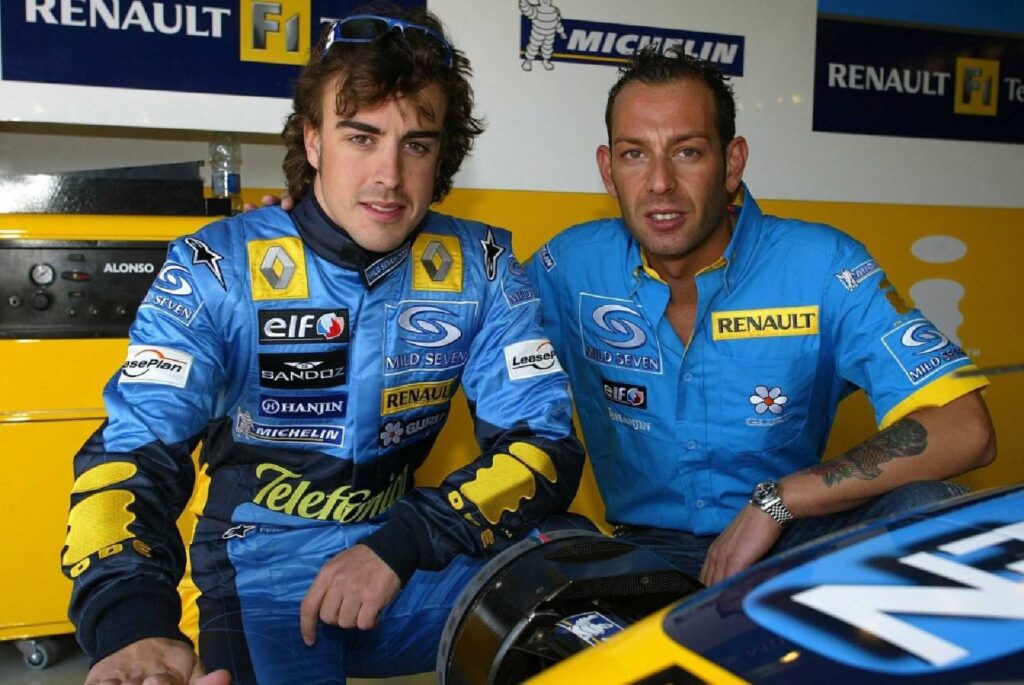The story of Guru: the rebellious daisy that marked an era
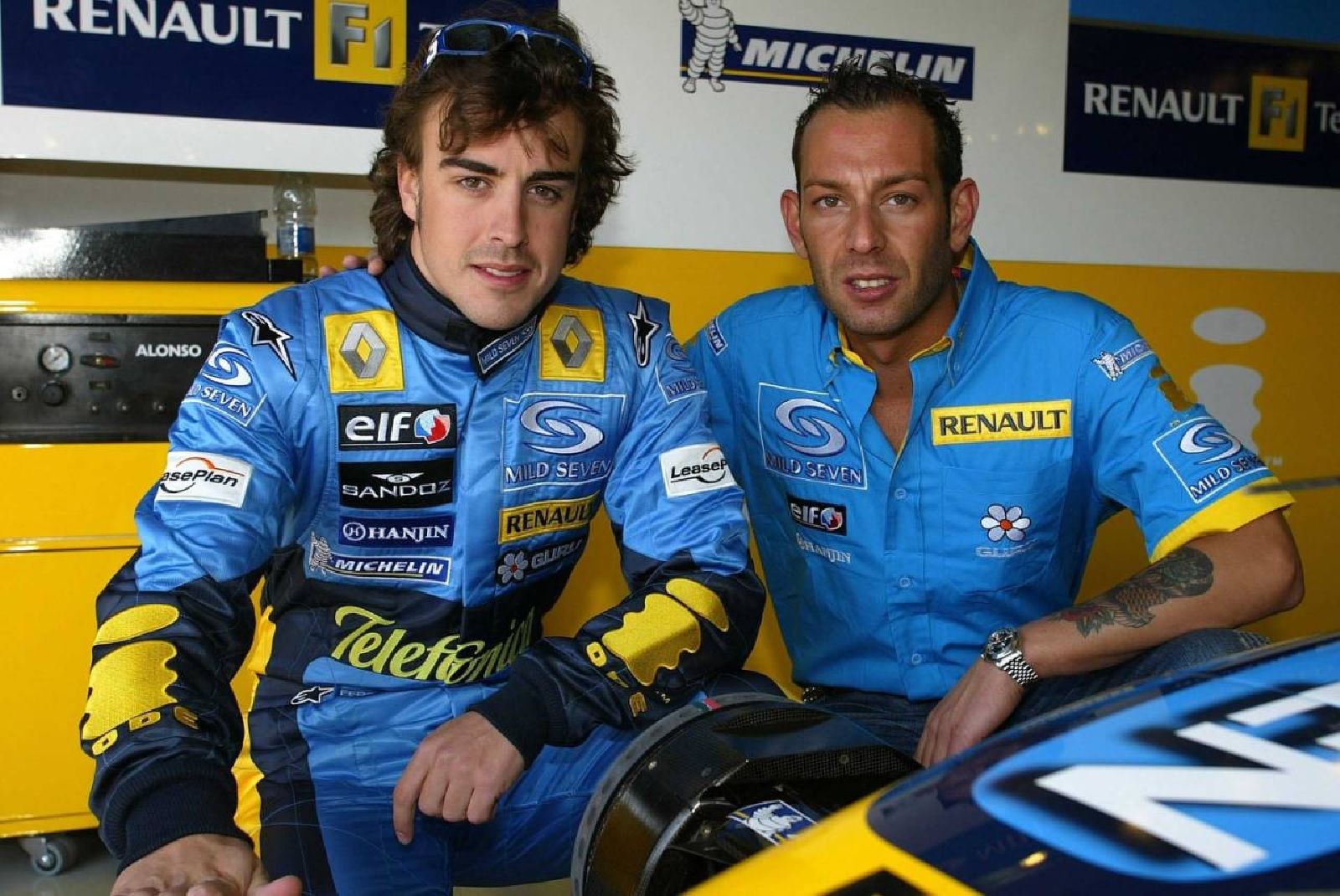
Guru is an Italian brand born in the early 2000s that has marked an era with its iconic, fresh and unconventional style . Symbol of a generation and recognized worldwide for its famous six-petaled daisy, Guru blended fashion, streetwear and pop culture into a distinctive and colorful aesthetic. Also famous for the stories of its founder Matteo Cambi, the brand continues to live on in the collective memory and today, under the leadership of Ghep Sarl (a Monaco-based company that will own it from 2021) with Cambi himself again involved, is preparing for a new era under the banner of quality, sustainability and contemporary design.
The birth of an icon
It all begins in Carpi, in Emilia, in 1999. Matteo Cambi, 22, decided to start a small brand of T-shirts and sweatshirts together with his childhood friend Gian Maria Montacchini . With a few million liras of capital and a garage used as a showroom, the two produce a first sample of T-shirts: out of 5,000 initial pieces, only 1,000 find buyers in the first year . It is at that point that the idea for the logo of the daisy stylized, white six-petaled daisy, a simple but visually striking symbol that immediately gives a strong identity to the brand . Even the name chosen , Guru, has no particular exotic references: it is adopted because it is original, short and easily pronounced in all languages . With the right logo and a fresh, young and irreverent product, Guru is ready to make a name for itself.
From the garage to the spotlight
Without large advertising budgets, Matteo Cambi relies on his own innate talent for public relations. His first move is to take daisy T-shirts to the coolest discos on the Riviera Romagnola and Milan, leaving them free on chairs or giving them to the right people . With nerve but genuine likability, Cambi gets noticed and wins the curiosity of many celebrities of the night. Before long, TV starlets such as Elisabetta Canalis and Elenoire Casalegno and, above all, sports champions such as Christian “Bobo” Vieri, Paolo Maldini, Filippo Inzaghi o Fabio Cannavaro start sporting his t-shirts in clubs and in public . None of them are paid or under contract: they simply like the product and wear it willingly, amused by the idea of communicating through those irreverent graphics .
In the summer 2001 the turning point occurs: a tabloid photo shows a group of well-known soccer players at the beach with the large daisy Guru printed on their backs. That image makes the rounds of the gossip magazines and turns the t-shirts Guru into a must-have suddenly indispensable . Taking advantage of the wave of success, Cambi immediately expanded the scope of promotional initiatives: sponsoring trendy clubs (from Pineta in Milano Marittima to the Billionaire in Porto Cervo, a hangout for the jet set), becoming a sponsor of the Parma Calcio, and finally lands in the world of Formula 1 alongside the Renault team of champion Fernando Alonso .
An unstoppable phenomenon
In parallel with the growth in popularity, Guru ‘s numbers are soaring. As early as 2002 sales exceeded 10 million., in 2004 it reached 70 million, touched 90 in 2006 and in 2007 is expected to exceed 100 million . Sales of daisy shirts exceed 3 million pieces already by 2003 . The brand explodes like wildfire far beyond Italy, spreading throughout Europe and reaching as far as the Middle East, the United States, Japan, Brazil, China and India . Everyone knows the daisy brand: at its peak, Guru is present in more than 17 countries with thousands of multibrand outlets .
To ride this overwhelming success, side lines and projects were also created between 2003 and 2005: Guru Gang, dedicated to teenagers (4-16 years old); Guru Baby Gang, for toddlers (0-3 years); and the acquisition of the Dutch brand Blue Blood specializing in denim . The company is structured as a holding company under the name Jam Session Srl, with Cambi joined by his mother Simona Vecchi and her partner Gianluca Maruccio De Marco in management, while enlisted as general manager is Patrick Nebiolo, former manager of Parma Calcio . In less than a decade, the project that started from a garage with 50 million liras of initial capital is transformed into a young fashion giant, growing at the rate of +15 million euros in sales per year . Guru can afford advertising campaigns signed by such renowned photographers as Stéphane Sednaoui, David LaChapelle o Terry Richardson, with leading ladies of the caliber of Pamela Anderson e Esther Cañadas . The daisy stands everywhere and is the symbol of a new rebellious and pop generation.
Guru & Formula 1: the flower that ran fast
In the midst of its rise, Guru links its name to a universe of speed, prestige and adrenaline: the Formula 1. Thanks to the personal friendship between Matteo Cambi and Flavio Briatore – at the time team principal of the Renault F1 Team – the daisy brand became the main sponsor of the team Renault in the 2005, 2006 and 2007 seasons . Perfect timing: in those very years Renault, with Fernando Alonso at the wheel, won two consecutive world titles (2005 and 2006 drivers’ and constructors’ championships), bringing the Guru logo into the spotlight of the world’s most prestigious circuits . The six-petaled flower stands out on the single-seaters, on the drivers’ overalls and in international paddocks, making its mark on millions of spectators.
“Briatore brought me to be a sponsor of Renault for three years, two of them as world champion with Alonso at the helm. This allowed me to open up to the Spanish market and make with Guru 35 million euros in Spain.” – Matteo Cambi
That of investing in Formula 1 turns out to be as bold as it is brilliant. In addition to the huge global image return, Guru takes an unconventional marketing linked to the sports partnership, with creative and out-of-the-box initiatives, including:
-
constant presence of the brand in paddocks and VIP parties at Grand Prix, fueling the glamorous aura around the brand;
-
capsule collection and limited-edition gadgets inspired by Formula 1, which have become collector’s items for fans;
-
massive media coverage in sports and lifestyle magazines, which further amplifies the visibility of Guru.
Not only F1: in 2007 Guru also appears in MotoGP, as a personal sponsor of the young Spanish talent Jorge Lorenzo in the 250cc class, who that very season won the world title . From the beaches to the pits, the daisy runs fast and continues to spread its free spirit.
From peak to crisis
After nearly a decade of soaring growth, the dream of Guru suffers a shock suddenness. As early as late 2006, some financial irregularities attracted the attention of the authorities, but it was in summer 2008 that the situation precipitates: the court in Parma declares Jam Session Srl bankrupt, crushed by more than 100 million euros in debt, and on July 11, 2008, Matteo Cambi is arrested along with his immediate family members on the main charge of fraudulent bankruptcy . Thus ended abruptly the first era of Guru, overwhelmed by the excesses and reckless financial management. Cambi himself would later admit that he made the mistake of never separating his private life from the company’s coffers, squandering the company’s assets and resources as if they were personal . That exaggerated lifestyle – amid lavish parties, sports cars, yachts and substance abuse – had created an irremediable economic chasm, contributing decisively to the group’s collapse .
Yet despite the thunderous fall, the brand Guru itself does not lose its appeal. The famous daisy remains etched in the collective imagination and indeed attracts new investors ready to pick up its legacy. In late 2008 the Indian textile giant Bombay Rayon Fashion Limited (BRFL) took over the brand Guru for 33 million euros, with the ambition to relaunch it on an international scale . Under BRFL management (2008-2015), numerous Guru stores are opened around the world, and Cambi himself is recalled in 2012 as a consultant for the brand he created . However, heavy debts inherited and the global financial crisis make it difficult to restore Guru to its former glory . In 2016, BRFL Italia, the local subsidiary that runs Guru, also got into difficulty and initiated a composition procedure to avoid bankruptcy .
In the following years, the brand changed hands in search of new stability. In 2019 the Court of Parma entrusts the management of the brand to the company Ibc Sagl of Lugano, which specializes in fashion-sport projects, appointing Simone Biagioni new creative director . At the same time, international distribution is assigned to the Monaco-based company Ghep Sarl, which was already collaborating as a logistics partner. Marketing is also reactivated: Guru reappears as a sponsor in some Italian sports events (e.g., cycling races such as Milan-Turin and Giro di Lombardia) to reconnect with the public .
The “new” Guru: relaunch with Ghep Sarl
After a decade of settling in, Guru finally turns over a new leaf. La Ghep Sarl, already the brand’s licensee, gets the master license at the end of 2020 and in May 2021 definitively acquires ownership of the brand Guru. Control thus returns to European hands and a new chapter opens. “Guru turns over a new leaf. The well-known daisy brand has just been acquired by the Monegasque company Ghep … which is working on a relaunch so that it can return to its historic success in Italy and Europe,” Pambianco News announced in 2021 . The new ownership, a partner in the brand for four years, is well aware of the potential of Guru and is investing to return the rebellious flower to its original splendor .. “In addition to GDO distribution, we are developing collections for other segments and collaborations that we will communicate in July,” said Gianluca Sessarego, CEO of Ghep, outlining expansion plans .
The relaunch of Guru tagged Ghep Sarl is based on a clear vision and renewed values, without betraying the essence of the brand. In particular, the new Guru focuses on:
-
Quality of garments and sustainable production chain, to offer cared-for and responsible products;
-
Contemporary design that reinterprets the colorful and pop style of the 2000s in a contemporary way;
-
Strong visual identity, centered on the iconic daisy, which has always been a recognizable and inclusive symbol;
-
Community: a direct link with historical fans and new generations, thanks also to social media (hashtag #followthedaisy) and initiatives aimed at engaging the public.
The biennium 2025-2026 will mark the beginning of a major global marketing campaign designed to celebrate the past and project Guru into a new era of style and recognition. After conquering the streets with t-shirts and sweatshirts with a free and authentic mood, the most famous daisy in Italian fashion is ready to make a comeback. Guru Today it is not just a clothing brand: it is a lifestyle, a creative platform for those who want to express themselves without compromise, looking to the future without forgetting their roots. The legend of the rebellious daisy continues, more social and more vibrant than ever.
Sources:
-
Kettj Talon, “Guru, the daisy brand that marked the 2000s.” nss magazine (08/11/2019) .
-
Lorenzo Salamone, “The indestructible daisy: Matteo Cambi recalls Guru and the 2000s.” nss magazine (17/05/2022) .
-
Guru (company), Wikipedia (last updated 2023) .
-
Matteo Cambi, Wikipedia (last updated 2023) .
-
RNS, “The Monegasque company Ghep takes over Guru” (26/01/2022)

